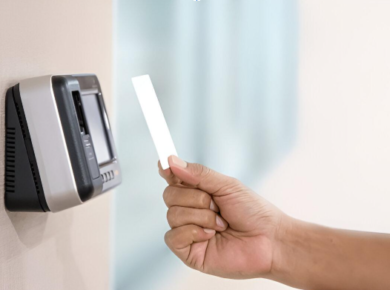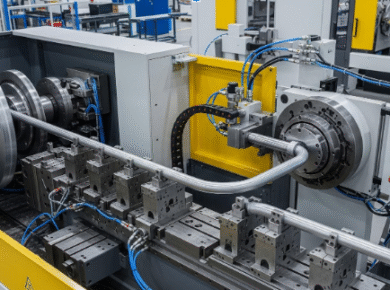Introduction
Despite being small and unassuming, personal protective equipment (PPE) like 3M respirators play a vital role in maintaining health and safety. They serve as our frontline defence against harmful airborne particles and contaminants, protecting us in various environments, from a dusty construction site to a busy hospital. We often overlook the importance of these devices in day-to-day life, but with the onset of global health crises, their role has become significantly magnified.
3M, a globally recognised brand committed to innovation and technology, is a leading name in the PPE industry, with their respirators recognised and trusted worldwide. 3M respirators come in various shapes and sizes, each designed to meet specific health and safety requirements. However, simply owning a quality 3M respirator is only half the battle—knowing how to maintain the device also proves paramount.
Understanding Your 3M Respirator
3M offers a wide spectrum of respirators, designed based on specific use-cases. There are disposable respirators, often used for one-time events like painting, filtration masks for protection against tiny particles, and full-face respirators for more industrial use. Each comes with features like cool flow valves, adjustable nose clips, and advanced electrostatic media for ease in breathing. The variety ensures that protection is provided in multiple scenarios, from daily wear to specific project use.
Aside from their practical design features, the real benefit lies in the respirators’ ability to filter out a high percentage of airborne particles. However, even with the superior features and benefits, maintaining the condition of the respirators assumes high significance to get the most out of these devices.
Why Maintenance Matters
The longevity and effectiveness of 3M respirators depend heavily on regular maintenance and proper care. Regular maintenance may seem like a chore, but it is critical to maintain the respirator’s integrity and functionality. Simple maintenance activities include inspecting the respirator for wear and tear, checking the filters, and ensuring the fitting remains snug.
Failure in maintaining these respirators duly compromises its efficiency. For instance, a respirator with a damaged seal or a clogged filter will offer sub-par protection. Furthermore, regular maintenance also ensures wearers that their respirator remains reliable and would perform optimally in situations when needed the most.
Proper Cleaning Techniques
Cleaning 3M respirators entails more than a simple rinse under the tap. Start the cleaning by disassembling the respirator according to manufacturer’s instructions. Then, wash each part gently with warm water and a mild soap, avoiding any harsh cleaning agents which may harm the respirator’s integral parts. After cleaning, rinse thoroughly and allow the parts to air dry.
Do not force-dry the parts using heat sources like a blow dryer, as it could lead to deformation or damage. Additionally, remember that the cleaning process also offers a great opportunity to inspect the respirator for any signs of damage or wear, especially at seams or connection points. Also, consider using a soft brush to reach the nooks and crannies of your respirator that are hard to clean.
Safe Storage Practices
Once cleaned, store your 3M respirators carefully to prevent damage. An ideal storage environment is dry and dust-free —it promotes longevity and ensures that the device is ready to use at any time. Avoid squeezing the respirator into tight spaces, which may inadvertently damage the elastic bands or deform the device.
Incorrect storage practices can significantly decrease your respirator’s lifespan and compromise its performance. For instance, leaving your respirator in excessively damp areas can lead to mould growth, which could later get inhaled. Additionally, continuous exposure to sunlight can cause the material to degrade over time.
Regular Checkups and Maintenance Timeline
For the general upkeep of 3M respirators, periodic checkups—even when the device isn’t in use—are necessary. A weekly inspection is advised for checking the structural integrity of the respirator and ensuring there are no visible damages. Thorough inspections, including cleaning and part replacements, should be conducted every month or after use in highly contaminated environments.
Having a maintenance timeline ensures your respirators stay in good condition even with regular use. The longevity of respirators largely depends on proper and regular upkeep, and even the highest quality respirator won’t do much good if neglected.
When to Replace Your 3M Respirator
Knowing when to replace your 3M respirator is critical as continual usage of a compromised device can be risky. Keep an eye out for signs indicating the need for replacement, like difficulty in breathing due to a clogged filter, or damages like cracks or tears on the respirator body.
Simple parts like filters or cartridges can typically be replaced when they get dirty or clogged. However, if the face-piece or the elastomeric parts show signs of wear and tear, it is best to replace the entire unit. In case of any doubts, always refer to the manufacturer’s guidelines regarding replacements.
Maximise Your 3M Respirator’s Effectiveness
To ensure that your respirator works at its best for longer, always adhere to the recommended guidelines regarding care, maintenance, and replacement. Regular inspections and cleaning after use will help maintain the respirator’s condition. Likewise, proper storage in safe, suitable locations ensures that the respirators are safeguarded against any potential damage.
Remember to replace filters or cartridges at the first signs of difficulty in breathing or visible signs of wear and tear. By adhering to the prescribed standards and practising the correct usage, you can substantially extend the lifespan and effectiveness of your 3M Respirators.
Conclusion
3M respirators, though tiny, hold paramount importance. They are protective gears that safeguard us from harmful airborne particles, a shield that we wear every day or on specific occasions, depending on our profession or environment. Maintaining and caring for your respirators, thus, becomes as essential as owning one. Regular inspection, careful cleaning, proper storage, and timely replacements are the steps to ensure the longevity of your 3M respirator.
Consider the above tips as a basic guide, and always refer to the manufacturer’s guidelines for best results. Keep in mind that the health benefits that respirators confer are reliant on their maintenance condition. Because at the end of the day, a well-maintained respirator makes a world of difference between your safety and risk.











